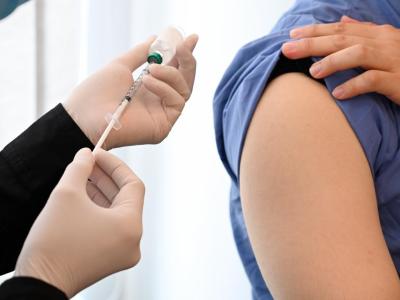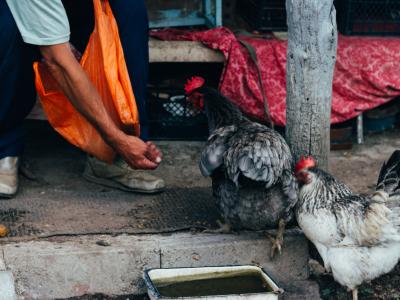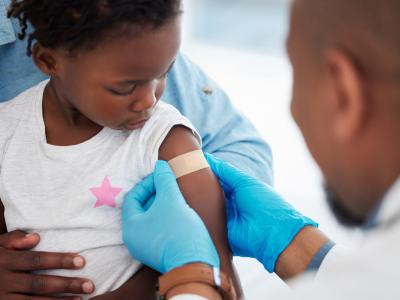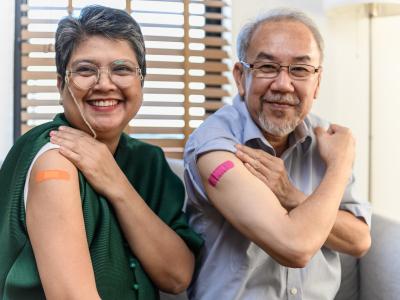Saudi Arabia reports 3 new MERS cases, 2 deaths
Saudi Arabia's Ministry of Health (MOH), which reported 9 MERS-CoV cases on May 11, has added 3 more in the past 3 days and reported 2 deaths in previously reported cases as it is apparently grappling with a Web site failure, switching to a new—and detail-limited—reporting system, or both.
On May 12 the agency reported one new case of MERS-CoV (Middle East respiratory syndrome coronavirus) in Riyadh. But it provided only an outbreak map in Arabic on a new site (wecanstopthis.com), while its traditional reporting site has remained inactive since May 11.
The MOH also provided no table with details, as has been its custom, so no further information is available about the May 12 case. The new site also provides no access to archived daily MERS-CoV reports. The agency made no announcement of the changes.
Yesterday the MOH confirmed two more cases, this time with details. The first patient is a 49-year-old man who is hospitalized in a ward in Riyadh. He is not a health worker and reported no exposure history.
The second patient is a 61-year-old man hospitalized in an intensive care unit in Hofuf. He had both exposure to camels and indirect exposure to camels, possibly through another person. He is not a household contact of a confirmed case-patient, however, and had no exposure in a healthcare setting. He also is not a health worker.
On May 11 the MOH reported four MERS cases in Hofuf that may be part of a family cluster. Yesterday's patient is not part of that cluster, since he had no contact with a household member with MERS-CoV.
Today the MOH reported the MERS-related death of a patient in Riyadh without divulging further information. It listed the country's MERS-CoV total as 999 cases, 433 deaths, and 14 patients still undergoing treatment.
May 14 Avian Flu Diary blog post on the situation
May 11 CIDRAP News story on previous 12 cases
WHO confirms 6 recent H7N9 cases in China
The World Health Organization (WHO) today said it had been notified by China of six more H7N9 avian influenza infections, two of them fatal.
Onset dates ranged from Mar 26 to Apr 12, with patient ages ranging from3 to 67, with a mean of 36 years. Four of the case-patients were male and four had been exposed to poultry environments. The illnesses were reported from five provinces or cities: Zhejiang (2) and Anhui, Fujian, Jiangsu, and Shanghai (1 each).
Compared with the past 2 months, the number of H7N9 infections is decreasing in China, the WHO said. In the WHO's last update on Apr 15, it noted 20 infections in the country between Feb 14 and Mar 21. However, it noted that sporadic human cases are expected in affected areas of China—and possibly neighboring areas—in the months ahead
It's likely that all of the cases noted in today's report have already been announced by local and provincial health departments, according to a running list of reports translated and posted by FluTrackers, an infectious disease news message board. The most recent cases reported were two in Zhejiang province, noted in its monthly disease surveillance report.
Today's WHO report doesn't list a cumulative H7N9 case total, but the list kept by FluTrackers puts the total at 662 cases.
May 14 WHO statement
FluTrackers H7N9 case list
May 13 FluTrackers thread on recent Zhejiang province cases
Bavarian Nordic reports good trial results for safer smallpox vaccine
Bavarian Nordic reported yesterday that two separate clinical trials of its Imvamune smallpox vaccine, designed to be safer than conventional smallpox vaccines, confirmed the product's immunogenicity and safety and helped pave the way for US stockpiling of a freeze-dried formulation.
In a phase 3 randomized, controlled trial, the company tested three lots of the liquid-frozen version of the vaccine in three groups of 1,000 volunteers each, with another 1,000 receiving a placebo. The three lots of vaccine induced equivalent antibody responses, meeting the primary goal of the study, the firm said in a press release.
The trial also confirmed the vaccine's favorable safety profile, with no serious adverse reactions among the vaccinees, who underwent close cardiac monitoring, the statement said. The company said this trial, combined with results of a phase 2 trial reported earlier, clearly differentiates the safety profile of Imvamune from that of conventional smallpox vaccines.
The phase 2 study, which involved 650 volunteers, compared the safety and immunogenicity of the freeze-dried and liquid-frozen formulations of Imvamune, the company reported. The freeze-dried vaccine induced an antibody response equivalent to the liquid-frozen version, meeting the study's primary goal. Both formulations showed similar safety profiles, confirming that the clinical data generated cumulatively in more than 7,600 vaccinated volunteers are relevant for both formulations, the company said.
"The results provide the final clinical data required to support stockpiling of the freeze-dried version of Imvamune in the U.S. Strategic National Stockpile," the statement said. Under a $22 million contract option with the US Biomedical Advanced Research and Development Authority (BARDA), Bavarian Nordic is working to transfer the freeze-drying process to a new manufacturing line with a larger commercial capacity. This is the last step toward meeting requirements to stockpile the freeze-dried version of the vaccine.
Paul Chaplin, president and CEO of the firm, said it is on track to complete the transfer in time to start deliveries of the freeze-dried vaccine in 2016.
May 13 Bavarian Nordic press release
FDA licenses facility to increase production of FluBlok vaccine
Protein Sciences Corp. of Meriden, Conn., announced this week that the Food and Drug Administration (FDA) has licensed a company facility in Pearl River, N.Y., that was acquired in late 2012 to increase production of the FluBlok influenza vaccine.
FluBlok, produced in cell culture rather than eggs, is billed as the first licensed flu vaccine made with recombinant technology.
Manon Cox, Protein Sciences president and CEO, said the Pearl River facility can produce four times as much FluBlok as the company's Connecticut facility. "This milestone enables us to substantially increase the availability of Flublok this year and in the future," she said.
The company bought the Pearl River plant from Pfizer at the end of 2012, officials said. The project has been supported with funds from BARDA.
May 12 Protein Sciences announcement
Islamic leaders redouble efforts to eradicate polio
The Islamic Advisory Group for Polio Eradication (IAG) has appealed to Islamic leaders to back its new action plan for helping eliminate polio in the few remaining affected Muslim countries, the WHO's Regional Office for the Eastern Mediterranean (EMRO) said in a news release.
In hopes of addressing the most pressing challenges facing polio eradication in endemic countries, Islamic scholars and experts of the IAG agreed to partner with key universities in Saudi Arabia, Egypt, and member countries of the Gulf Cooperation Council (GCC) to develop "Islam and Immunization" training modules and curricula to engage students in the affected countries to assist with local polio eradication efforts.
The IAG, which met last week in Cairo, also resolved in its plan to work with nongovernmental organizations and charities active in affected countries, and to promote statements and Friday sermons from Islamic leaders on the importance of the effort. The IAG will approach ministries of health, finance, and foreign affairs in the GCC and other Islamic donor countries for financial support and collaboration.
The IAG also plans to enhance the work of the National Islamic Advisory Group for Polio Eradication in Pakistan and organize IAG member interactions with religious institutions in priority areas.
The news release is dated May 7 but was posted yesterday.
May 7 WHO EMRO news release
 Persons infected with the outbreak strain of Salmonella Muenchen, by state of residence, as of May 13, 2015 (n = 20). [CDC map]
Persons infected with the outbreak strain of Salmonella Muenchen, by state of residence, as of May 13, 2015 (n = 20). [CDC map]









